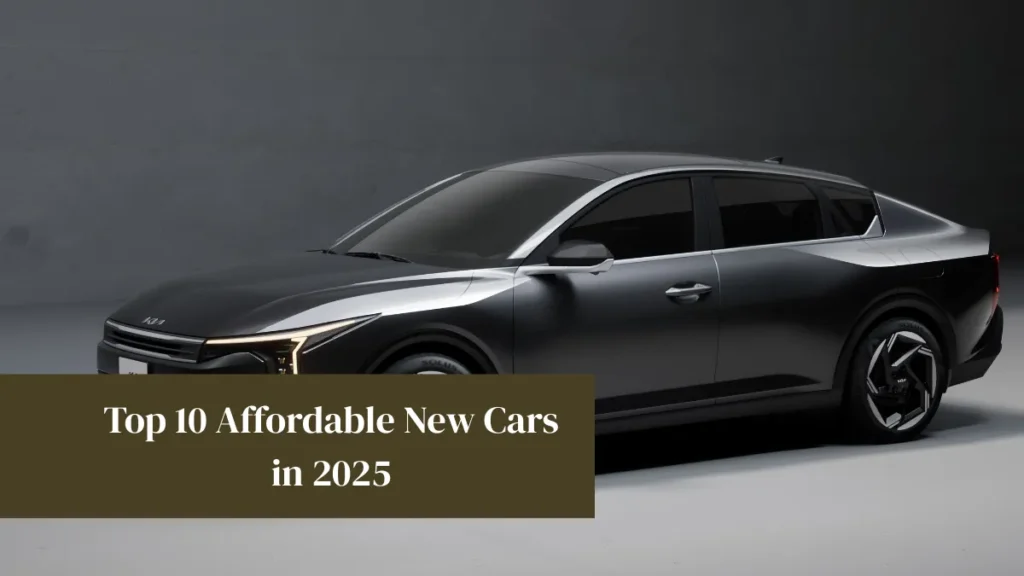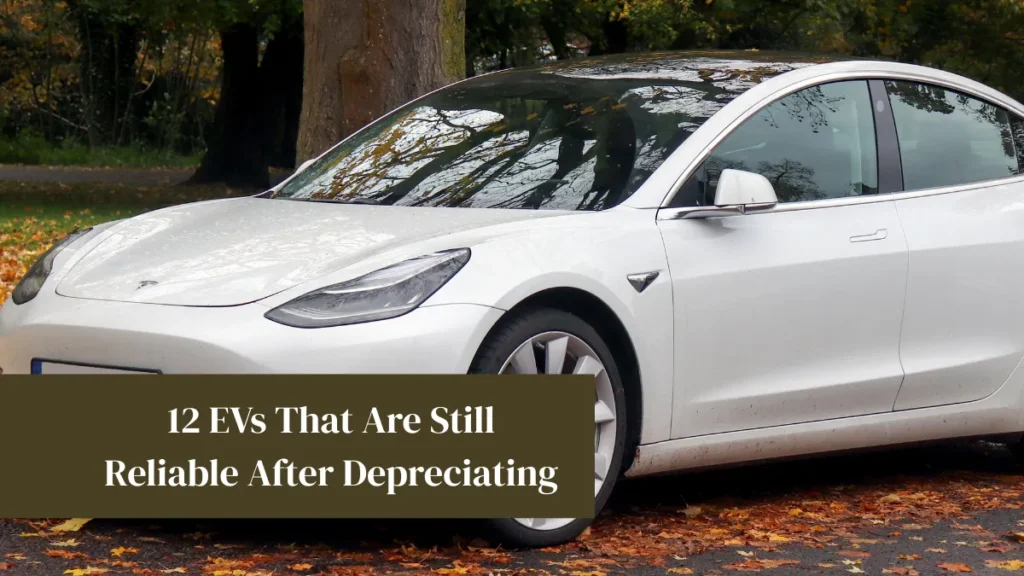Some of the most dependable and clever cars on the road are produced by Japanese manufacturers. Over decades, companies such as Toyota, Honda, and Nissan have developed outstanding reputations. Not every model, meanwhile, meets that criterion. Although Japan’s automotive sector is usually regarded as innovative and of high quality, several duds have escaped notice. Whether for poor dependability, antiquated design, poor fuel economy, or low safety ratings, we are listing 10 of the worst Japanese automobiles to avoid purchasing in this article.
From inadequate engines to high maintenance expenses, these cars have found their place on our list for all the incorrect reasons. Keep reading if you are looking for a used or new automobile and wish to prevent regret years later. Knowing which models to avoid can save thousands in repairs and trouble. Let us explore the most underwhelming Japanese vehicles you should avoid.
1. Mitsubishi Mirage
Although the Mitsubishi Mirage has a reasonable price tag, the negatives far exceed any savings. Both buyers and critics note its weak 1.2-liter 3-cylinder engine, which provides poor highway capacity and slow acceleration. Inside the Mirage, the cheap plastic materials, unpleasant seats, and antiquated infotainment system that lags behind other cars in its class make it somewhat archaic. Furthermore, dubious is dependability, particularly given claims of variable building quality and gearbox problems in CVT versions.
Though its fuel economy—about 36–43 mpg—the absence of safety measures, low crash test ratings, and limited basic technology make this a dangerous purchase. It lacks the dependability and polish demanded of Japanese producers. If you are looking for a subcompact, Toyota or Honda has significantly superior choices with enhanced ride quality, safety, and long-term dependability. The Mirage is quite cheap for a reason; avoid it if you can.
2. Suzuki Forenza
Though the Suzuki Forenza was sold as a dependable and reasonably priced little sedan, it finally fell short of Japanese automobile standards. Made between 2004 and 2008, it was really a rebadged Daewoo design, which explains many of its flaws. Owners sometimes grumbled about bad construction, electrical system problems, and early transmission breakdowns. Driving was also unappealing because of the Forenza’s poor handling with loose steering and too much body roll.
The car lacked contemporary safety measures that were rapidly becoming standard in rivals, and the inside materials seemed out of date even at the time of delivery. Finding components and appropriate servicing for the Forenza can also be difficult, as Suzuki is leaving the American auto market in 2012. The Forenza just does not fit your search for a trustworthy used Japanese compact. Its continuous lack of quality serves as the reason this forgotten car is forgotten.
3. Nissan Juke
With its distinctive, controversial look, the Nissan Juke surely created waves, but in many important respects the vehicle falls short. Although the turbocharged engine produces good power, it is coupled with a continuously variable gearbox (CVT) that has shown over years to be troublesome. Many Juke owners document CVT problems, too much noise, and significant maintenance costs—all of which compromise the long-term value of the car. Furthermore, less sensible than other subcompact SUVs on the market are the Juke’s narrow rear seats and limited load capacity.
Though it seems unique, the design compromises unpleasant sitting, bad ergonomics, and poor visibility. Average at best is fuel efficiency; resale value is poor because of their reputation for dependability problems. The Juke is not a wise choice, as numerous rivals provide greater space, comfort, and fewer maintenance problems. Stylish appearances by themselves cannot make up for the ownership difficulties that over time bring.
4. Mazda CX-7
Though on paper the Mazda CX-7 is a crossover SUV, it falls short on several fronts. Its turbocharged engine is the main problem; it has been connected to several dependability issues, including early engine wear and turbocharger problems. Many owners also overuse oil, which, if not closely watched, causes engine harm. Apart from that, the car has dismal fuel economy—far worse than some of its non-turbo rivals. Inside, the CX-7 seems smaller than expected, with tight back seats and a luggage room not meeting SUV criteria.
Particularly on difficult roads, the ride quality is extremely unpleasant and stiff. Although Mazda has a decent general driving dynamic reputation, the CX-7 is an outlier hampered by high maintenance costs and below-average reliability. Better choices exist for those seeking a comfortable crossover with longevity. The CX-7’s problems make it ultimately a car best avoided on the used market.
5. Honda Crosstour
Though it turned out to be an uncomfortable mix of neither, the Honda Crosstour was an effort to combine SUV utility with sedan characteristics. Constructed on the Accord chassis, the Crosstour has a slanted back roofline that drastically reduces rear headroom and storage space. The car’s weight and slow handling restrict performance even with its respectable V6 engine. The design of the car causes owners to lack sight, and it does not provide the raised driving posture anticipated of a crossover.
Particularly for the all-wheel-drive vehicles, which are prone to suspension and differential problems, maintenance expenses can also be more. Moreover, the Crosstour battled with identity—too heavy to be a car, too impractical to be a real SUV—that affected its resale value and sales. For whatever reason, Honda stopped it in 2015. Although dependable in several areas, Honda’s lineup suffers a setback with the Crosstour’s clumsy performance.
6. Toyota Yaris iA
Although the Toyota Yaris iA has the Toyota logo, Mazda developed it first and renamed it during the phase-out of Scion. Although it’s not the worst automobile available, it’s usually seen as lackluster in comparison to other Toyota models. Particularly on highways, the 1.5-liter engine seems slow; the car suffers with acceleration and passing power. Unless you choose higher trims, the interior is simple and almost naked, using harsh plastics and few amenities.
Another typical issue is road noise; therefore, lengthy trips are less pleasant. Though the Yaris iA has good fuel efficiency, it lacks the electronics, comfort, and refinement that consumers want from contemporary subcompacts. < Its resale value falls below comparable cars such as the Honda Fit or Toyota Corolla as well. Looking for a reasonably priced Toyota, there are just better choices with more comfort, more performance, and more dealer assistance.
7. Isuzu Axiom
For good reason, the Isuzu Axiom is among the most forgettable Japanese SUVs. Early 2000s production of the Axiom was beset by mechanical and quality control problems. Particularly in areas with severe winters, several owners claimed early gearbox failures, engine troubles, and major corrosion concerns. Less attractive than rivals in its class, the Axiom also suffered from a harsh ride and low fuel efficiency. Isuzu left the U.S. passenger car market in 2009; hence, replacement components and servicing are now rare.
It was significantly less competitive as the inside seemed antiquated even during its manufacturing years, and safety measures were few. Said another way, it’s a flimsy car with poor aging. Skive the Axiom completely if you are looking for a trustworthy SUV. Among the worst Japanese cars ever sold in the United States, it has low resale value, mediocre performance, and high maintenance expenses.
8. Subaru Baja
Aiming to cover a niche no one truly wanted, the Subaru Baja was an unusual blend of a sedan and a pickup truck. It aimed to combine the all-wheel-drive capability of the Outback with a little pickup bed, but it failed to appeal to either market. The car’s driving experience was not as good as Subaru’s other products, and the bed was too tiny to be very handy for transporting. Although certain models’ turbocharged engines improved power, they also brought several dependability problems like turbo troubles and head gasket failures.
Given its very small audience, the Baja also suffered from uncomfortable style and low resale value. Road noise was notable, and inside materials were not very good. Although some enthusiasts still value its eccentricity, the Baja lacks dependability and practicality, particularly in the market of today with considerably superior options. This is one unusual Subaru you would be best off missing unless you are a niche collector.
9. Daihatsu Charade
The little-known Japanese subcompact, the Daihatsu Charade, made sporadic appearances on the American market. Even for a budget car, the automobile just lacked the durability and sophistication American consumers anticipated, even while it promised exceptional fuel efficiency and price. The engine barely fit for city driving and was dangerously sluggish on highways, as it was underpowered to a fault. Minimal build quality, poor engineering, and inexpensive materials degraded dependability.
Parts availability was always restricted; today, decades after production stopped, locating replacements is considerably more challenging. The automobile also fared badly in crash tests and lacked fundamental safety elements. Daihatsu is still running in certain foreign markets, but its brief U.S. stint leaves little to applaud. The Charade is practically extinct now for good reason: almost every rival in its category outclasses it. If you come across one used, you should avoid it.
10. Nissan Quest (2004–2009)
One thing the 2004–2009 Nissan Quest minivan is renowned for is issues. Transmission difficulties, defective power sliding doors, and faulty electronics were just a few of the dependability problems this Quest generation had. Many owners also complained about internal quality, including dashboard panels that, over time, twisted or came free. Critics of the center-mounted gauge cluster argued it was unusual and difficult to operate.
Although the engine itself wasn’t bad, the Quest’s general performance fell far below ideal. Road noise was too loud, handling seemed flimsy, and its poor reputation caused resale prices to fall. The Quest just lacked the same degree of dependability or family-friendly amenities as the Honda Odyssey or Toyota Sienna. Their history of costly repairs makes old models dangerous purchases even now. The Nissan Quest from this era is one minivan you really should avoid for families seeking dependable transportation.
FAQs
1. Are all Japanese cars reliable?
No, while many Japanese cars are reliable, some models have known issues and should be avoided due to poor performance or maintenance problems.
2. Why do some Japanese cars perform poorly?
Issues can include design flaws, underperforming engines, outdated technology, or quality control lapses during production.
3. How can I check if a Japanese car model is reliable?
Consult consumer reports, vehicle history databases, and owner reviews. Look at long-term reliability ratings and recall history.
4. Is it safe to buy a used Japanese car?
Yes, but avoid the specific models with a history of mechanical problems. A pre-purchase inspection is also highly recommended.
Bottom Line
Usually a safe bet, but not always are Japanese automobiles. Sometimes even reputable companies offer models that fall short. Whether it’s bad resale value, transmission problems, or malfunctioning electronics, the vehicles on this site are well-known for generating problems. Long-term avoidance of these models will save you time, money, and worry.
Before you buy, always investigate owner reviews and dependability ratings. There’s no reason to settle for one that underperforms with so many great alternatives from Japanese companies. Keep to tested models and avoid the flops; we have done the research so you won’t have to.


